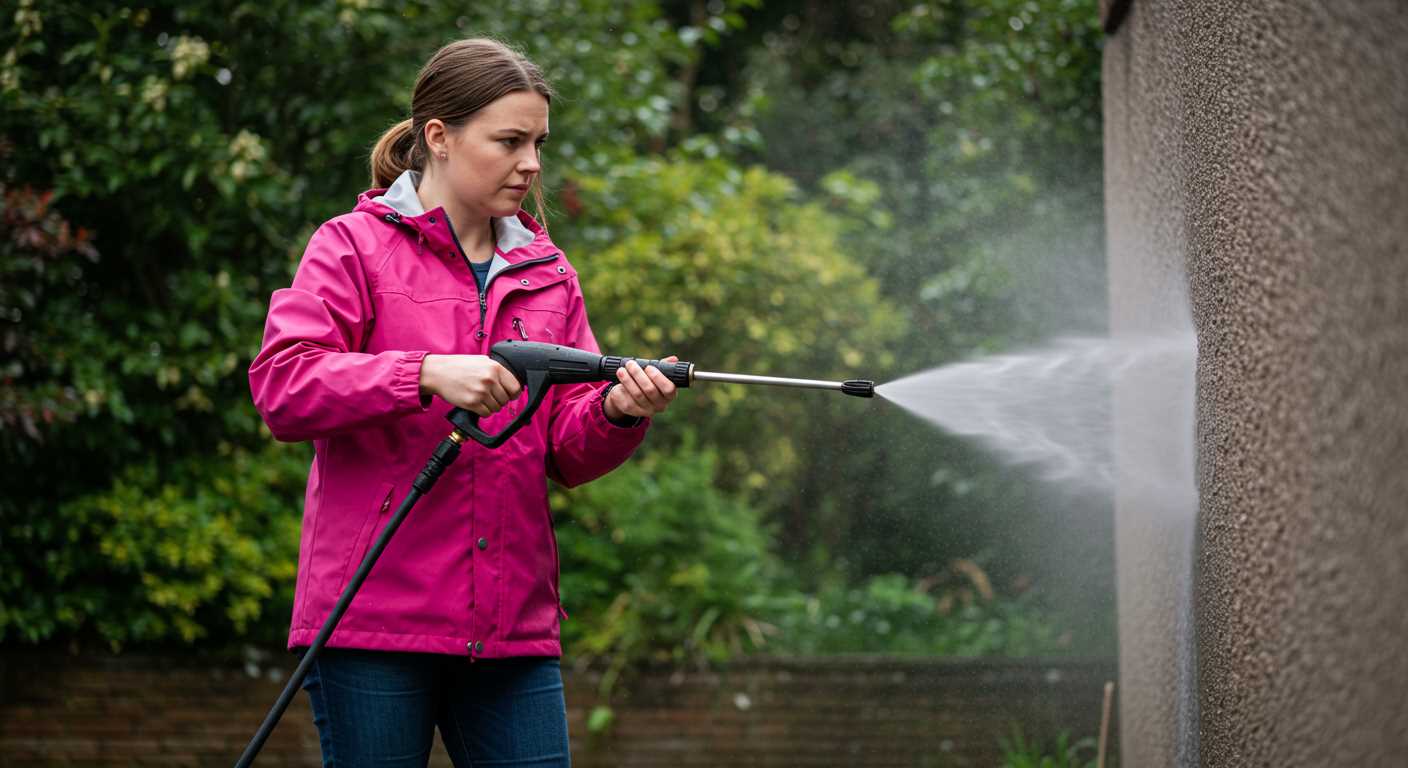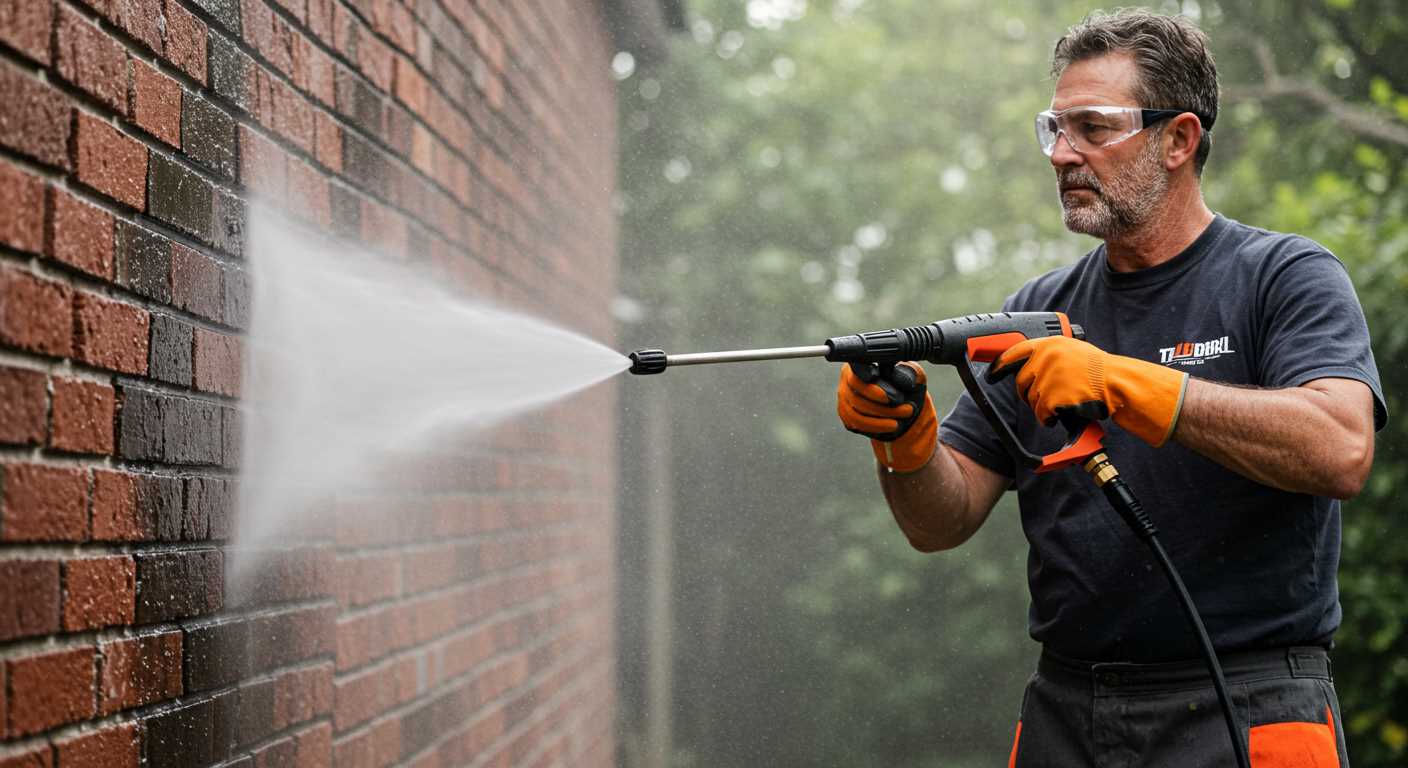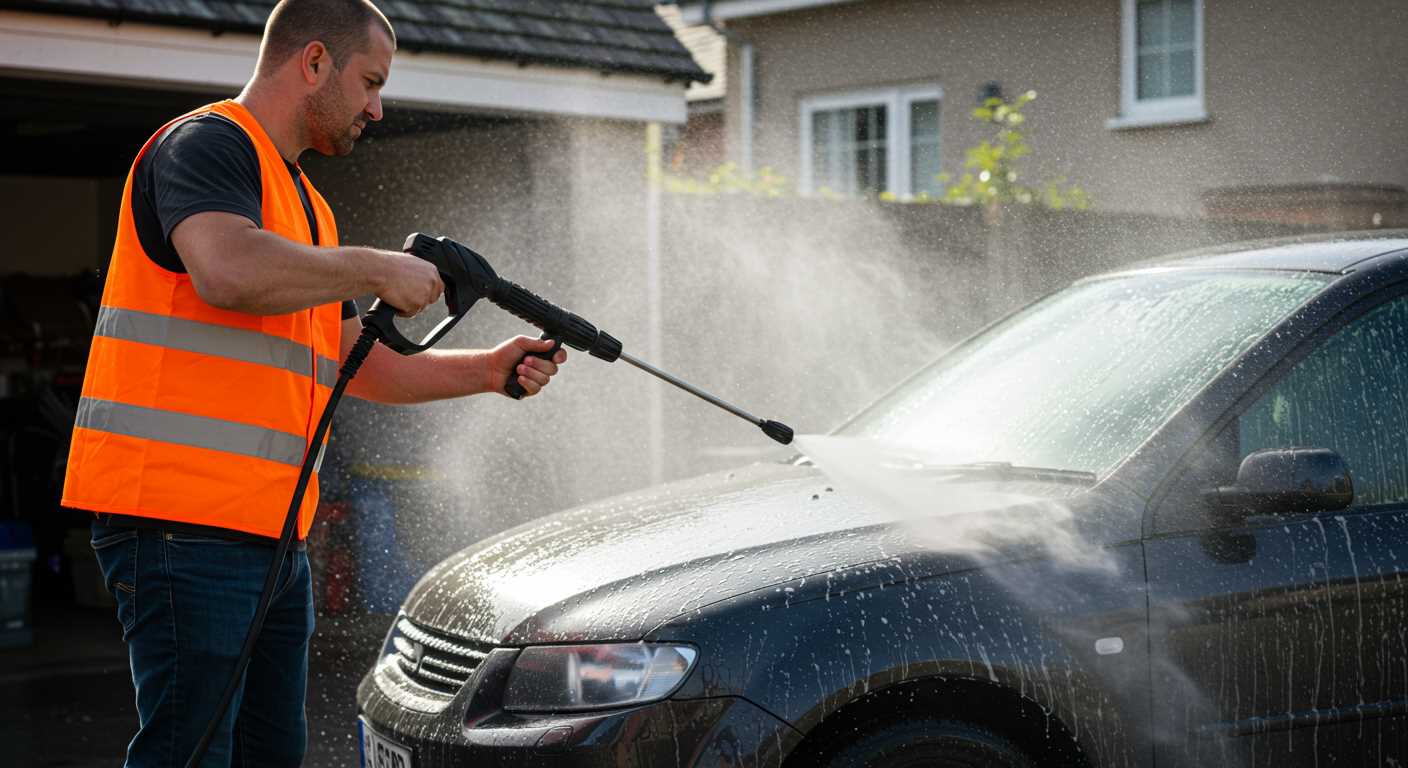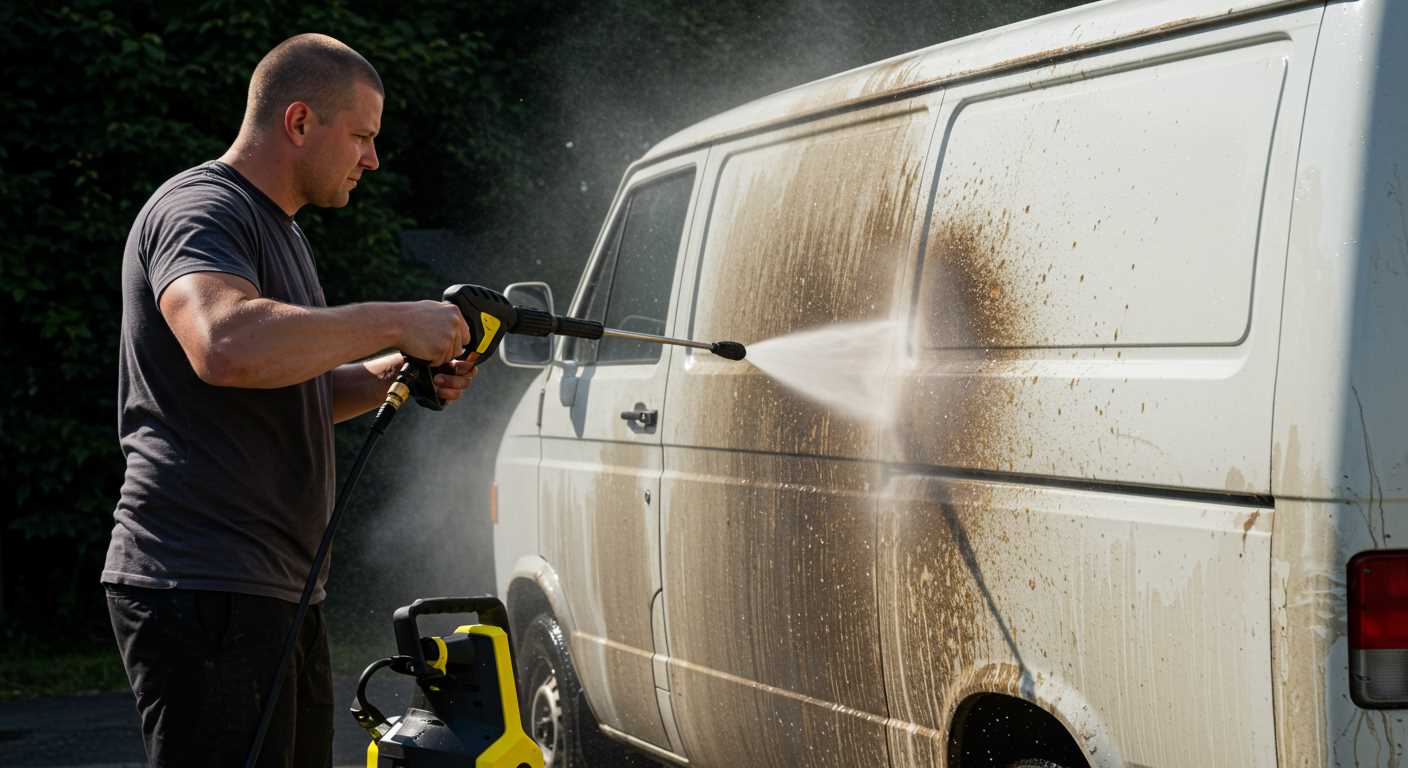




As a homeowner, I often find myself facing the challenge of keeping my outdoor spaces clean and inviting, especially when there’s no outside tap available. This led me to explore the world of pressure washers, specifically those that can operate efficiently without a direct water source. In this article, I’ll share my findings on the best pressure washers suitable for those of us in similar situations.
The article is designed for anyone who, like me, struggles with maintaining cleanliness in their garden, driveway, or patio without the convenience of an outdoor tap. Whether you live in a flat, have a small garden, or simply want to avoid the hassle of plumbing, I will guide you through the top options available on the market today.
I will provide a comprehensive overview of the best pressure washers that can draw water from alternative sources, such as buckets or rainwater tanks. You’ll find insights into their features, performance, and portability, ensuring you make an informed decision. By the end of this article, you’ll be equipped with the knowledge to choose the perfect pressure washer to meet your needs, regardless of your water access situation.
Understanding the Need for a Pressure Washer Without External Water Supply
For many homeowners and outdoor enthusiasts, maintaining a clean and tidy environment is a priority, yet access to an external water supply can sometimes be limited. This can pose a challenge when it comes to using traditional pressure washers, which rely heavily on a constant water source. In such situations, the need for a pressure washer that operates independently of an external tap becomes increasingly relevant.
Pressure washers without an external water supply offer a practical solution for those who wish to tackle various cleaning tasks, from washing cars to cleaning patios. These devices typically incorporate a built-in water tank, allowing users to draw water from the tank itself, making it possible to clean in locations where a tap is not available.
Advantages of Pressure Washers Without External Water Supply
There are several benefits to using pressure washers that do not require an external water supply:
- Portability: These machines are usually lighter and easier to manoeuvre, making them ideal for outdoor activities such as camping or road trips.
- Convenience: With a built-in water tank, users can fill the machine with water before use, eliminating the need to find a tap.
- Versatility: They can be used in various settings, including remote areas or places with limited access to water.
- Time-saving: The ability to carry water along allows for quicker setup and immediate cleaning without searching for a water source.
In conclusion, pressure washers without an external water supply provide a versatile and convenient option for those looking to maintain cleanliness in areas where traditional methods may fall short. Their design caters to a wide range of cleaning needs, ensuring that users can achieve effective results, regardless of their water access limitations.
Key Features to Look for in Self-Contained Pressure Washers
When searching for a self-contained pressure washer, there are several essential features to consider that can greatly enhance your cleaning experience. These machines are designed for convenience and portability, making them ideal for users without access to an outside tap. Understanding these key features will help you make an informed decision.
One of the most important aspects to examine is the water tank capacity. A larger tank allows for extended cleaning sessions without the need to refill frequently. Additionally, look for models with a good pump pressure and flow rate, as these factors determine the efficiency and effectiveness of the cleaning process.
Important Features to Consider
- Portability: Lightweight and compact designs make it easier to move the washer around your property.
- Power Source: Check whether the unit is electric or petrol-powered, as this affects its performance and suitability for different tasks.
- Nozzle Options: A variety of nozzles provides versatility for different cleaning applications, from gentle rinsing to high-pressure blasting.
- Storage Solutions: Built-in storage for hoses and accessories can help keep your workspace tidy and organised.
- Durability: High-quality materials and robust construction ensure longevity and resistance to wear and tear.
In summary, when selecting a self-contained pressure washer, pay attention to factors such as water tank capacity, portability, power source, nozzle options, and overall durability. These features will significantly influence your satisfaction and the overall performance of the machine.
Pressure Washers for Indoor Use Reviewed
Finding a suitable pressure washer for indoor use can be challenging, especially when there is no access to an outside tap. These machines are designed to be versatile, allowing users to clean various surfaces inside their homes, from patios to garage floors. The right model can make a significant difference in achieving a clean and tidy environment.
When selecting a pressure washer for indoor use, one should consider factors such as portability, noise level, and size. Some models are compact and lightweight, making them easy to manoeuvre in tight spaces. Additionally, quieter machines are preferable for indoor cleaning to avoid disturbing household members.
Key Features to Look For
- Water Source: Many indoor pressure washers can draw water from buckets or large containers, eliminating the need for an external tap.
- Power and Pressure: Look for models that provide adequate pressure for various cleaning tasks without being overly powerful, which could damage indoor surfaces.
- Attachments: Nozzles and brushes that cater to different surfaces can enhance the cleaning experience and effectiveness.
- Storage and Portability: Consider machines that are easy to store and transport, especially if space is limited.
By focusing on these features, one can find a pressure washer that not only meets indoor cleaning needs but also enhances the overall cleanliness of the home environment. Investing in a quality model can lead to long-lasting benefits and a more manageable cleaning routine.
Comparative Analysis of Electric vs Petrol Pressure Washers
When choosing a pressure washer for tasks without access to an outside tap, the decision often comes down to electric or petrol models. Each type has its own set of advantages and disadvantages, which can significantly influence the effectiveness and convenience of the cleaning process.
Electric pressure washers are typically lighter and more compact, making them easy to manoeuvre and store. They are also quieter during operation and produce zero emissions, which can be an important consideration for those conscious of their environmental impact. However, they may have limitations in terms of power and pressure output, which can affect their cleaning capability on tougher surfaces.
Performance and Usability
In contrast, petrol pressure washers offer greater power and higher pressure ratings, making them suitable for more demanding cleaning tasks. Their ability to operate independently of an electrical source can be advantageous in remote locations. However, they come with drawbacks, including heavier weight, increased noise levels, and the need for regular maintenance, such as oil changes and fuel management.
| Feature | Electric Pressure Washers | Petrol Pressure Washers |
|---|---|---|
| Weight | Lightweight | Heavier |
| Power | Lower pressure | Higher pressure |
| Noise Level | Quieter | Louder |
| Emissions | No emissions | Produces emissions |
| Maintenance | Minimal | Regular maintenance required |
Ultimately, the choice between electric and petrol pressure washers depends on the specific cleaning needs and the environment in which they will be used. For lighter tasks and ease of use, electric models are often the preferred option. However, for more intensive cleaning and demanding conditions, petrol pressure washers may prove to be the better choice.
Effective Techniques for Using a Pressure Washer with Limited Water Access
Using a pressure washer can be a highly effective way to clean various surfaces, even when access to an outside tap is limited. By employing a few smart techniques, you can maximise the efficiency of your cleaning tasks without compromising on performance. Water management becomes crucial in these scenarios, and understanding how to utilise the available resources effectively will yield the best results.
One of the main challenges when using a pressure washer without a direct water supply is ensuring a consistent flow of water. This can be achieved by using a water storage solution, such as a large tank or a rainwater barrel, which can be filled and used as a water source. Additionally, knowing how to connect your pressure washer to this water source effectively can significantly enhance your cleaning experience.
Methods for Efficient Water Usage
- Use a Suction Hose: Many pressure washers have the capability to draw water from a container using a suction hose. Ensure that the hose is submerged in the water source and securely connected to the machine.
- Limit Water Usage: Adjust the nozzle of your pressure washer to minimise water flow while maintaining pressure. This can help conserve water while still achieving effective cleaning.
- Pre-soaking: For heavily soiled areas, consider pre-soaking the surfaces with soapy water or a cleaning solution. This will loosen dirt and grime, allowing the pressure washer to work more effectively with less water.
- Use a Bucket: If a large tank isn’t available, filling a bucket with water and using a siphon method can serve as a temporary solution. Ensure you have enough water for your cleaning tasks before starting.
By implementing these techniques, you can effectively use a pressure washer even when water access is limited. Understanding the best practices for water management will enable you to tackle cleaning tasks efficiently and responsibly.
Essential Accessories for Optimal Performance and Convenience
When using a pressure washer without an outside tap, having the right accessories can significantly enhance both performance and convenience. These accessories are designed to improve water supply, cleaning efficiency, and overall user experience, making your pressure washing tasks much easier and more effective.
One of the most crucial accessories is a water storage solution. A large water tank or barrel allows for ample water supply, ensuring that your pressure washer operates without interruptions. Additionally, a hose reel can simplify the process of storing and managing hoses, preventing tangles and wear, while also keeping your workspace organised.
Key Accessories to Consider
- Water Filter: Protects the pressure washer from debris and sediment, ensuring optimal performance.
- Extension Hose: Increases reach, allowing you to clean larger areas without needing to move the pressure washer frequently.
- Surface Cleaner: Enhances cleaning efficiency on large flat surfaces, providing a uniform clean without streaks.
- Foam Cannon: Offers enhanced cleaning with soap and foam, improving the attachment of cleaning agents to surfaces.
- Pressure Washer Accessories Kit: A set that includes nozzles and brushes tailored for various cleaning tasks, maximising versatility.
Investing in these essential accessories not only boosts the performance of your pressure washer but also adds convenience to your cleaning routine. By ensuring you have the right tools at your disposal, you can tackle any cleaning job efficiently, even without direct access to an outside tap.
Maintenance Tips for Longevity of Portable Pressure Washers
To ensure your portable pressure washer remains in optimal condition and provides reliable performance, regular maintenance is essential. By following a few simple practices, you can extend the lifespan of your device and enhance its efficiency significantly. Proper care not only protects your investment but also ensures that you achieve the best results during your cleaning tasks.
Here are some key maintenance tips to keep your portable pressure washer running smoothly:
- Regular Inspection: Frequently check hoses and connections for any signs of wear or leaks. Replace damaged parts immediately to prevent further issues.
- Clean the Filter: Ensure the water filter is clean and free from debris. A clogged filter can lead to reduced performance and potential damage.
- Flush After Use: After each use, run clean water through the machine to remove any detergent residue and contaminants that could cause blockages.
- Store Properly: Keep your pressure washer in a dry, protected area. Avoid exposure to extreme temperatures, which can damage internal components.
- Check Oil Levels: For models that require oil, regularly check and change the oil as per the manufacturer’s recommendations to ensure smooth operation.
- Use the Right Detergents: Always use detergents that are suitable for pressure washers to avoid damaging the machine and to achieve effective cleaning results.
By adhering to these maintenance tips, you can maximise the longevity and performance of your portable pressure washer. A little care goes a long way in keeping your equipment functioning at its best, allowing you to handle various cleaning tasks efficiently.
Top 10 Best Pressure Washer Without An Outside Tap






Best Pressure Washer Without An Outside Tap
Features
| Part Number | SQ-222-2 |
| Model | SQ-222 |
| Color | black |
Features
| Part Number | 16736040 |
| Model | 1.673-604.0 |
| Warranty | 2 Year Manufacturer |
| Color | Yellow |
| Size | Pack of 1 |
| Language | English |
Features
| Part Number | 1.673-501.0 |
| Model | 1.673-501.0 |
| Color | Yellow/Black |
| Release Date | 2020-02-01T00:00:01Z |
| Language | English |
Features
| Part Number | 5133005366 |
| Model | 5133005366 |
| Warranty | 3 year warranty. |
| Color | Hyper Green |
| Language | English |
Features
| Part Number | 1.673-604.0 |
| Model | 1.673-604.0 |
| Warranty | 2 years. |
| Color | Yellow/Black |
| Size | LARGE |
Features
| Part Number | com-hw-94-05057 |
| Model | com-hw-94-05057 |
| Color | Green |
| Size | 3.2Gallon |
Video:
FAQ:
Can I use a pressure washer without an outside tap?
Yes, you can use a pressure washer without an outside tap by connecting it to an indoor water source, like a sink or bathtub, using a long hose and appropriate adapters. Alternatively, some pressure washers can draw water from buckets or tanks, making them versatile for various situations.
What are the best pressure washers available that don’t require an outside tap?
Some of the best pressure washers that can operate without an outside tap include models that allow for water intake from a bucket, such as the Kärcher K2 or the Sun Joe SPX3000. These models come with the necessary accessories to facilitate water suction, making them ideal for users without access to an outside tap.
How do I set up a pressure washer without an outside water source?
To set up a pressure washer without an outside water source, first ensure you have the right model that allows for suction from buckets or tanks. Fill a bucket with water and place it at a suitable height. Connect the pressure washer’s inlet hose to the bucket, ensuring a tight seal. Start the pressure washer, and it should begin drawing water. Monitor the water level and refill as needed during use.
Are there any limitations when using a pressure washer without an outside tap?
Yes, there are some limitations. Using a pressure washer without an outside tap may restrict the water supply, which can lead to reduced cleaning power, especially for larger jobs. Additionally, you need to frequently refill the water container, which can be inconvenient. It’s also important to ensure that the water source is clean to avoid damaging the pressure washer.
What features should I look for in a pressure washer for indoor use?
When selecting a pressure washer for indoor use, consider models with a lower noise level, as they will be more suitable for residential areas. Look for lightweight and compact designs for easy manoeuvrability. Also, check for features like adjustable pressure settings and compatibility with various attachments, which can enhance versatility for different cleaning tasks.
What features should I look for in a pressure washer that does not require an outside tap?
When searching for a pressure washer that operates without an outside tap, consider several key features. First, look for models that have a built-in water tank, allowing you to use the machine independently of a fixed water source. The tank capacity is important; a larger tank means longer cleaning sessions without the need for refills. Additionally, check for models with adjustable pressure settings, which can help you tackle various cleaning tasks, from delicate surfaces to tougher grime. Portability is also a factor; choose a lightweight design with wheels for easy movement. Finally, ensure the pressure washer comes with various nozzles and attachments, as these can enhance versatility for different cleaning jobs.



.jpg)


